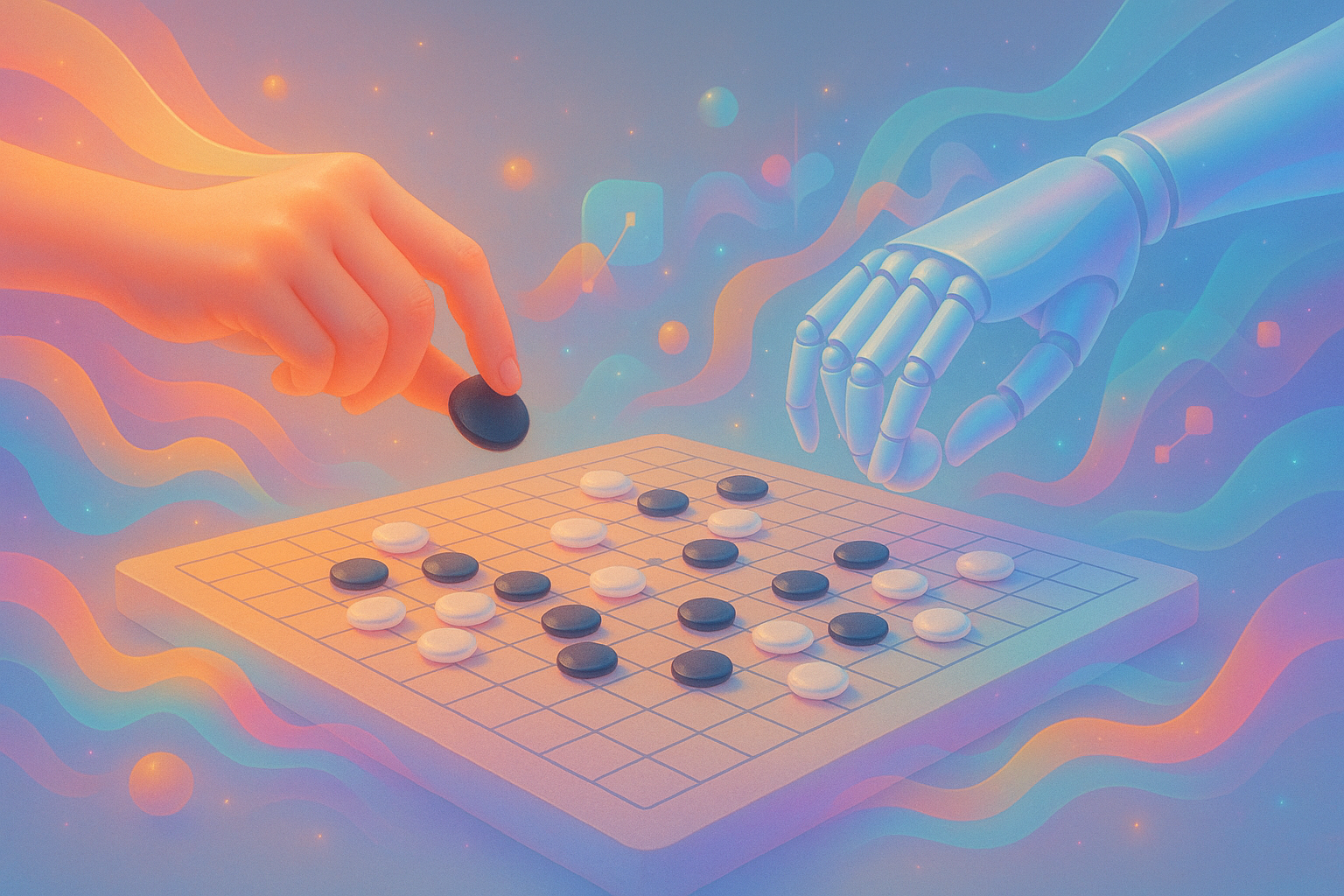Keeping the Human in the Loop: Championing Creativity in the Age of AI
by Jameson Proctor, Partner & CEO @ Athletics
“AI today doesn’t have true creativity… It can maybe prove something that you give it, but it’s not able to come up with a new idea or new theory itself.”
Recently, I watched Google DeepMind CEO Demis Hassabis in conversation with David Friedberg at the All-In Summit. Their session, “AI, Creativity, and a Golden Age of Science”, covered everything from AlphaFold2 (the groundbreaking system for predicting protein structures) and its roots in AlphaGo, to robotics, game design, the evolving role of co-creation, and much more. But it was a quiet, almost offhand remark that stuck with me:
“AI today doesn’t have true creativity… It can maybe prove something that you give it, but it’s not able to come up with a new idea or new theory itself.”
It’s a statement that captures the paradox many of us are navigating: AI is dazzling in its capabilities, but still derivative at its core.
At first glance, that might offer comfort to those of us who build our lives—and livelihoods—around creative work. But we’d be unwise to take too much solace. Because even if machines haven’t yet cracked the code of human creativity, they’re getting closer by the day to approximating it—often at a level that’s indistinguishable to the average viewer, listener, or reader. For agencies and creative professionals, that raises a new challenge: If creativity can be simulated with stunning fidelity, what does it mean to stay meaningfully human in an AI-powered creative industry?
Augmentation Over Automation
One answer lies in rethinking what creativity actually looks like in the modern workflow.
At Athletics, our creative tool Sesame began as a traditional motion and design platform—governed, templatized, and brand-safe by design. But, as client expectations evolved, so did our roadmap. We started by integrating Adobe Firefly Services, enabling users to generate text-to-image and text-to-video assets directly in the interface. We then incorporated smart utilities like Adobe’s Reframe, an AI-powered API that elegantly solves one of the oldest problems in digital design: cropping and centering creative content across various aspect ratios.
Thanks to Reframe, we offload the tedious, repetitive tasks to AI and unlock time and energy for designers to focus on more conceptual, high-impact work. This is a place where AI shines—not by replacing creatives, but by removing the friction that gets in their way.
AI Fluency Is Creative Fluency
Still, many teams feel pressure to “use AI” without a clear sense of how. That’s why we’re now prototyping a prompt-first interface for Sesame that allows users to describe their needs in natural language. The prompt is interpreted by a model trained on both the Sesame system and the client’s brand components generating a first pass at a creative solution.
But that’s not the end of the process. It’s the beginning. The user is then transitioned into the manual interface, where human judgment and hands-on design take over.
This loop—machine generation followed by human refinement—is where the real creative value is emerging. And it’s not just a workflow shift. It’s a mindset shift. One that prioritizes intention over automation and recognizes that fluency with AI is becoming part of the creative skillset itself.
Training AI, Ethically
We’ve applied the same philosophy to a new approach for brand illustration that leverages generative tools without compromising originality or ethics.
The model is built on a dual investment: first, we commission human artists to create a bespoke library of 3D or illustrated assets; then, we use those assets to fine-tune a proprietary generative model. This allows the brand to generate on-demand creative that stays true to its visual identity while ensuring the model sits on top of licensed, commercially safe material (e.g., via Adobe Firefly or Getty’s platform).
We’ve even proposed two pathways: a client can access the model on a platform like Adobe Creative Cloud, or license access via our own tool, Sesame, which includes a royalty system that compensates artists for downstream use. For clients who prefer full ownership without ongoing royalties, the initial commission is priced higher to reflect that broader scope of use.
Either way, human authorship stays central—not just in training the model—but in defining how it behaves, evolves, and respects the craft.
Can AI Invent the Next "Go"?
Later in his conversation with Friedberg, Hassabis turns to AlphaGo — the AI that famously beat the world’s top player at the ancient board game Go. He posed a question that sharpened the creative tension even further:
“Can an AI system come up with a game as elegant, as satisfying, as aesthetically beautiful as Go—not just a new strategy?”
It’s a compelling distinction. AI can now optimize for beauty, coherence, even originality. But, can it originate an idea like Go? A design language like Bauhaus? A symbol as timeless as the Nike Swoosh?
For now, the answer remains no. But, even if AI can’t create meaning from scratch, it’s more than capable of co-creating it. And that’s the nuance creative teams must embrace. The real threat isn’t that AI will replace human creativity. The threat is that we’ll act as if it already has — leaning too hard on machines, losing sight of nuance, and eroding the signals that make a brand or story feel distinctly human.
The Closing Argument
AI won’t replace human creativity. But it will redefine it.
As the line between automation and artistry continues to blur, the job of creative leaders isn’t just to defend human imagination—it’s to design systems where it can thrive. That means building tools, workflows, and platforms that treat AI not as a replacement, but as a collaborator. It means putting authorship before efficiency, intentionality before automation—and people, always, at the center of the process.
Because while AI might be able to generate a thousand ideas, it still takes a human to know which one actually matters.
Jameson Proctor, Athletics


